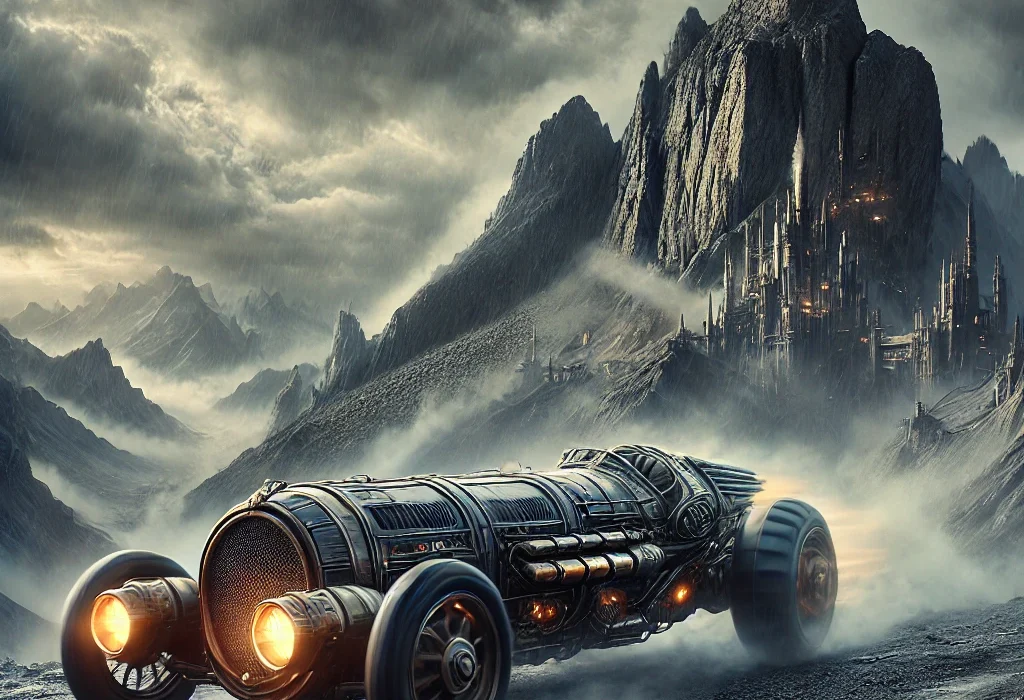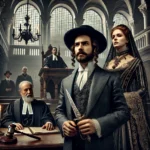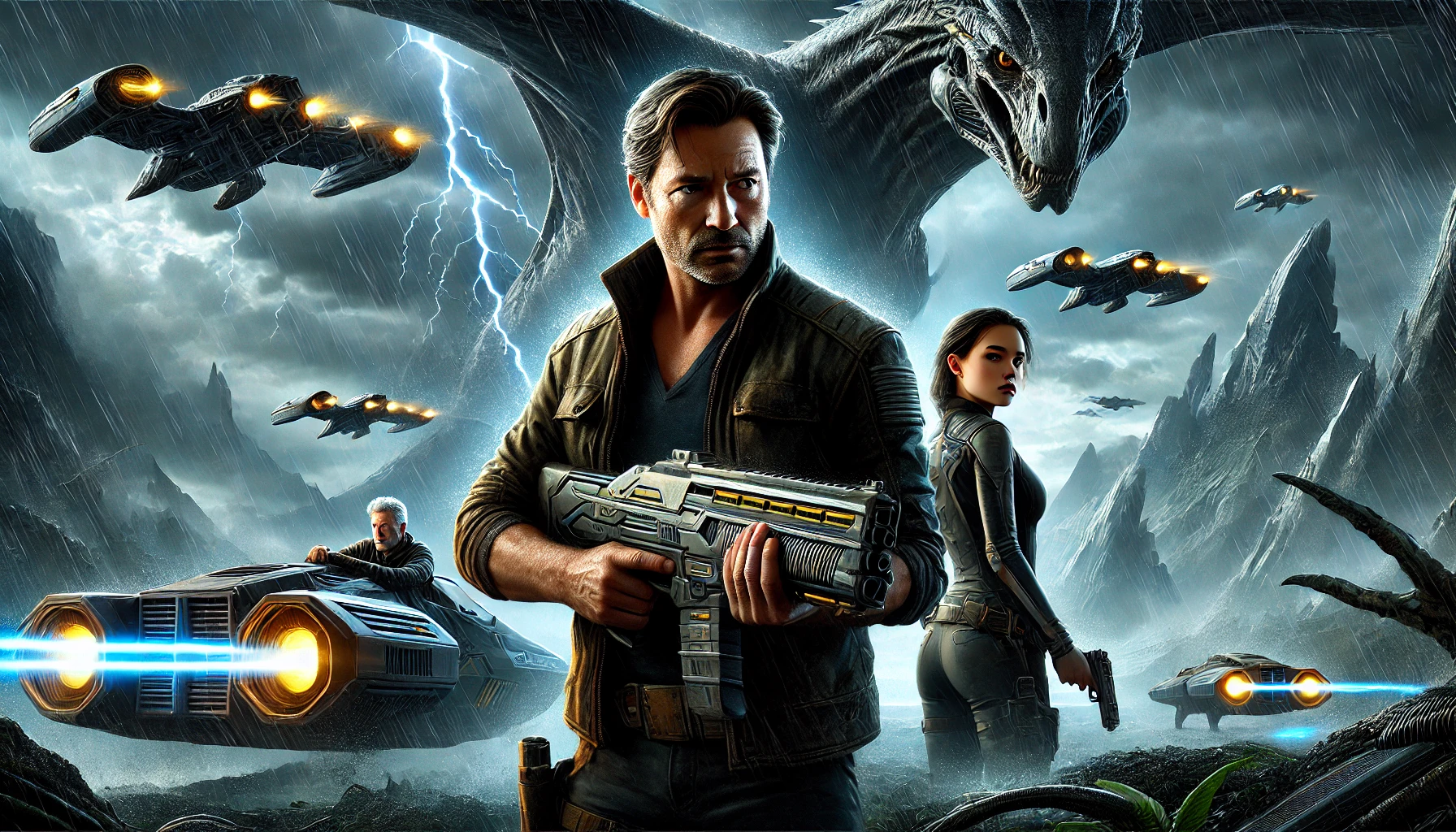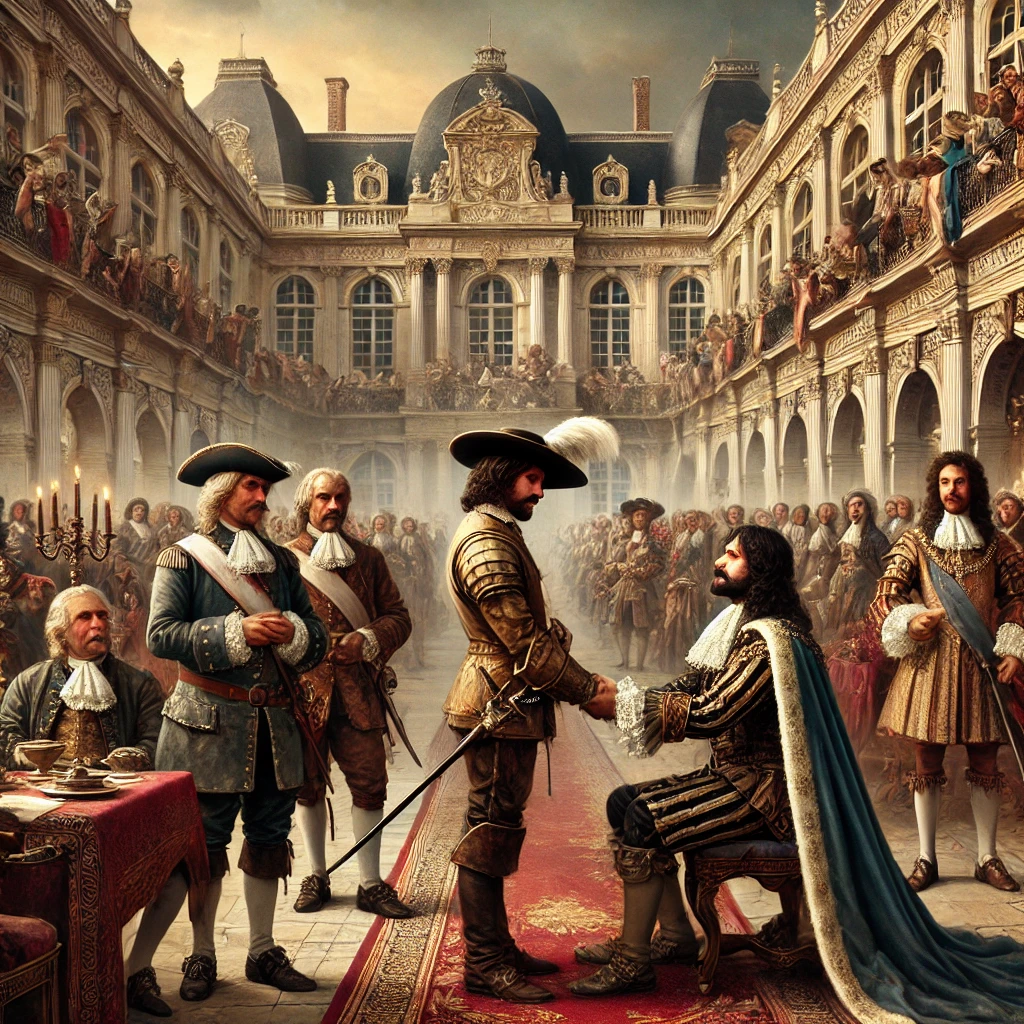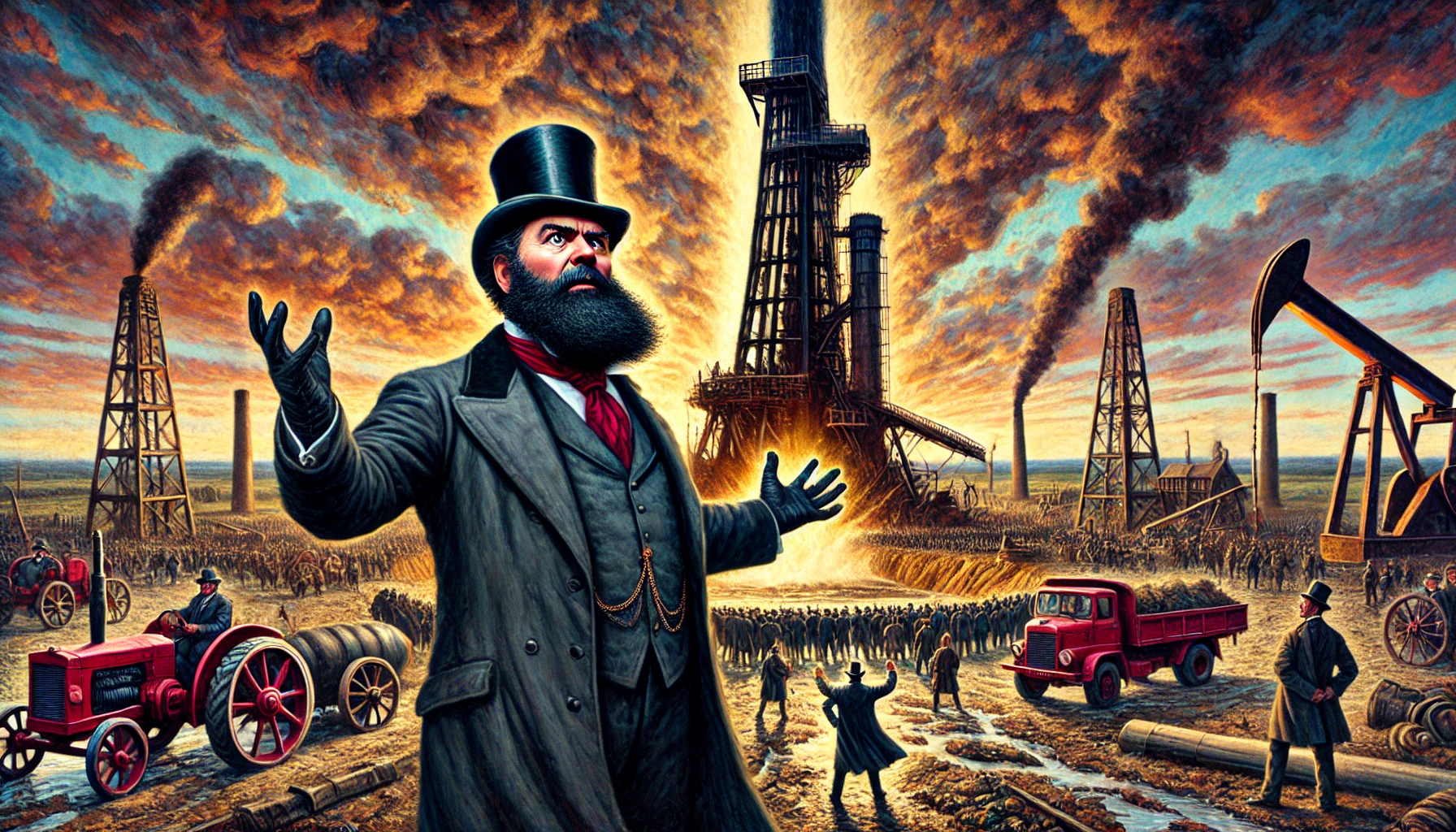“The Master of the World” by Jules Verne, published in 1904, is a gripping science fiction novel that explores the themes of technological power, human ambition, and the quest for control over nature. Set in the early 20th century, the story follows a mysterious inventor who creates a vehicle capable of extraordinary feats on land, sea, and air, thereby challenging the boundaries of human achievement. The novel combines elements of mystery and adventure as the protagonist attempts to uncover the truth behind the elusive inventor’s dangerous ambitions.
Plot Summary
On a quiet spring morning, the inhabitants of the small town of Morganton, North Carolina, witnessed a peculiar phenomenon. High above the Blue Ridge Mountains, the peak known as the Great Eyrie emitted an eerie light, accompanied by strange rumblings. This spectacle captured the curiosity of the townspeople and spread fear throughout the region. What lay at the heart of this mountain, shrouded in mystery and veiled in seemingly supernatural phenomena? In response to the growing panic, the government dispatched John Strock, an inspector from the federal police department in Washington, to investigate the Great Eyrie and uncover the source of these disturbances.
Strock, a man of methodical mind and unyielding determination, embarked on this perilous mission with two local guides. They ascended the treacherous slopes of the Great Eyrie, only to find themselves thwarted by the sheer walls that guarded the summit. After hours of arduous climbing, they could not gain access to the mountain’s interior, leaving Strock with more questions than answers. Was the Great Eyrie a dormant volcano, a hidden refuge of some ancient creature, or something even more sinister? Strock returned to Washington, frustrated yet resolute to unravel the enigma that eluded him.
Meanwhile, reports of a strange and formidable vehicle began to surface across the United States. Witnesses spoke of an automobile that moved at a breathtaking speed, faster than any known vehicle. It seemed to glide over the roads like a phantom, leaving only a faint trail of dust in its wake. The public was both fascinated and terrified by this mysterious apparition, which could vanish from sight before any pursuit could be mounted. Newspapers dubbed it “The Terror,” a name befitting its almost supernatural swiftness and the fear it instilled in all who saw it.
Rumors abounded about the identity of the driver and the nature of this machine. Some claimed it was driven by a madman, a genius inventor who sought to demonstrate his superiority over the world. Others suggested more fantastical origins, whispering that it was the work of an otherworldly being or even the Devil himself. The government, alarmed by the potential threat to public safety, intensified its efforts to track down “The Terror” and its enigmatic pilot.
Strock, now back in Washington and still haunted by his failure at the Great Eyrie, was called upon once more. This time, his task was to investigate the sightings of “The Terror” and, if possible, capture the vehicle and its driver. His pursuit took him across the country, following the trail of this elusive machine. He learned that the vehicle was not confined to the roads. It had been seen speeding across the surface of lakes and even the ocean, moving with the grace and agility of a fish. It was as if the machine defied the laws of physics, capable of transitioning seamlessly from land to water to air.
After days of relentless pursuit, Strock found himself in the New England region, where “The Terror” had been most recently spotted along the coastlines. His investigation led him to a startling conclusion—the vehicle was not merely an automobile but an incredible multi-terrain craft, capable of navigating land, sea, and sky. This revelation only deepened the mystery. Who could have conceived and built such a marvel? And to what end?
The answer came in the form of an encounter with the vehicle itself. In a daring and dangerous maneuver, Strock managed to intercept “The Terror” as it sped along a desolate road. To his astonishment, the machine was unlike anything he had ever seen—sleek, cigar-shaped, and exuding an aura of unparalleled power. It was at this moment that Strock came face to face with its creator: Robur, a man of formidable intellect and unbridled ambition.
Robur revealed himself to be a visionary, a genius inventor who had surpassed the technological limitations of his time. His vehicle, aptly named “The Terror,” was a testament to his mastery over engineering and his desire to prove that he was the true master of the world. Robur believed that humanity had stagnated, confined by its limitations and fears. He sought to demonstrate the full potential of human ingenuity, to show that with enough ambition and willpower, one could transcend the boundaries of nature itself.
Strock, while in awe of Robur’s creation, quickly realized the danger posed by this man’s unchecked ambition. Robur had no regard for the laws of society or the safety of others. His demonstrations of power, though awe-inspiring, were reckless and could easily result in catastrophe. The inspector understood that Robur’s vision of mastery over the world was one that could lead to its very destruction.
Despite his fascination with “The Terror,” Strock knew he had to stop Robur. The inventor’s disregard for human life and his thirst for absolute control made him a threat that could not be ignored. However, capturing or subduing a man with such advanced technology was no easy task. Robur had the advantage of his extraordinary machine, which could outmaneuver any conventional force sent against it.
The confrontation between Strock and Robur reached its climax when “The Terror” attempted one final, dramatic display of its power. Robur aimed to scale the Great Eyrie, the very mountain that had defied Strock’s earlier attempts. In a daring flight, Robur piloted his machine to the summit, seeking to conquer the ultimate symbol of nature’s dominance. Yet, in a twist of fate, the mountain that had guarded its secrets so fiercely became the undoing of Robur. “The Terror,” caught in a violent storm, lost control and was engulfed by the Great Eyrie, sealing its fate within the very heart of the mystery it sought to master.
Strock, witnessing the demise of Robur and his creation, was left to ponder the events that had unfolded. The Great Eyrie, with all its mysteries, remained unconquered, a testament to the limits of human ambition. Robur’s downfall served as a sobering reminder of the dangers inherent in the pursuit of absolute power. The inspector returned to Washington with a renewed understanding of the delicate balance between human innovation and the forces of nature that surround us.
Main Characters
- John Strock – The head inspector in the federal police department at Washington, Strock is a curious and determined investigator tasked with unraveling the mystery of the Great Eyrie and the enigmatic inventor. His persistence and methodical approach drive the narrative forward as he attempts to uncover the truth behind the incredible machine.
- Robur – The antagonist, an eccentric and brilliant inventor who has created the all-powerful vehicle “The Terror.” Robur embodies the theme of unchecked technological ambition. He aims to demonstrate his power and control over nature, positioning himself as a master of the world. His complex character oscillates between genius and madness.
- Mr. Ward – Strock’s superior and the head of the federal police, who assigns Strock to investigate the strange occurrences at the Great Eyrie. Ward represents the authority concerned with maintaining order and the public’s safety amidst the potential threat posed by Robur.
Theme
- Technological Power and Ambition: The novel explores the limits of human ambition and the dangers of technological advancements in the wrong hands. Robur’s creation of “The Terror” signifies the pinnacle of engineering but also serves as a cautionary tale about the potential misuse of such power.
- The Unknown and Human Curiosity: Verne delves into the human desire to understand and conquer the unknown, illustrated through Strock’s relentless investigation of the Great Eyrie and the mysterious machine. This theme highlights both the noble and perilous aspects of human curiosity.
- Nature vs. Human Control: Throughout the novel, the struggle between natural forces and human attempts to control them is a central motif. Robur’s quest to dominate the elements with his invention raises questions about the ethical boundaries of human control over nature.
Writing Style and Tone
Jules Verne employs a descriptive and suspenseful narrative style in “The Master of the World.” His writing is meticulous, filled with detailed technical descriptions that reflect his fascination with scientific innovation. The language is formal and precise, lending an air of credibility to the speculative technology he imagines. Verne’s use of first-person narration through Strock adds an element of immediacy and personal involvement, allowing readers to experience the unfolding mystery and the protagonist’s thoughts directly.
The tone of the novel is one of intrigue and tension. Verne builds an atmosphere of suspense as Strock unravels the enigma of Robur and “The Terror.” This sense of unease is amplified by the moral ambiguity surrounding Robur’s character and the potential consequences of his technological prowess. The narrative often oscillates between admiration for human ingenuity and a somber warning against its potential for destruction.
We hope this summary has sparked your interest and would appreciate you following Celsius 233 on social media:
There’s a treasure trove of other fascinating book summaries waiting for you. Check out our collection of stories that inspire, thrill, and provoke thought, just like this one by checking out the Book Shelf or the Library
Remember, while our summaries capture the essence, they can never replace the full experience of reading the book. If this summary intrigued you, consider diving into the complete story – buy the book and immerse yourself in the author’s original work.
If you want to request a book summary, click here.
When Saurabh is not working/watching football/reading books/traveling, you can reach him via Twitter/X, LinkedIn, or Threads
Restart reading!


